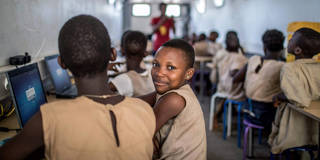Creating a world free of poverty on a livable planet hinges on boosting growth and creating jobs in Africa. At this week's G7 summit, leaders must focus on how they can help African countries achieve these goals, which will require a strategy based on five key priorities.
NOUAKCHOTT – Across the Global South, young people are yearning for opportunity and a better life. But while 1.2 billion people in developing countries are projected to reach working age over the next decade, only an estimated 420 million jobs will be available to them, leaving nearly 800 million people without a clear path to employment. Even though some of this cohort will continue their education, that would only delay, and possibly prolong, the crisis.

NOUAKCHOTT – Across the Global South, young people are yearning for opportunity and a better life. But while 1.2 billion people in developing countries are projected to reach working age over the next decade, only an estimated 420 million jobs will be available to them, leaving nearly 800 million people without a clear path to employment. Even though some of this cohort will continue their education, that would only delay, and possibly prolong, the crisis.